#Kennecott Garfield Smelter Stack
Photo
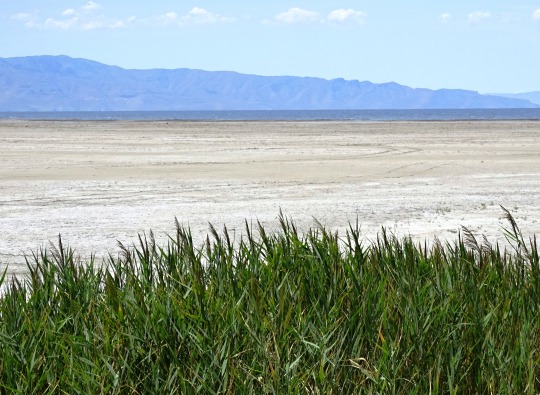

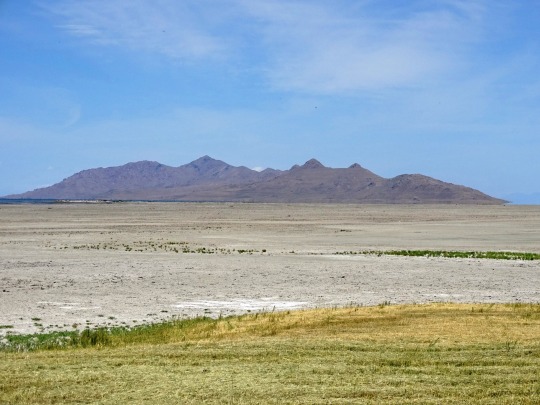
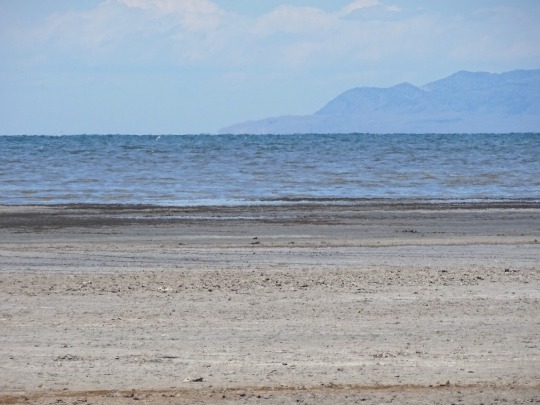
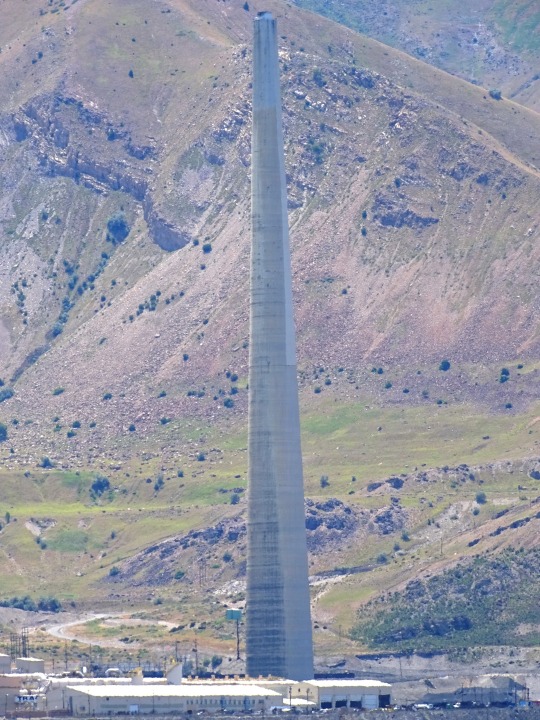
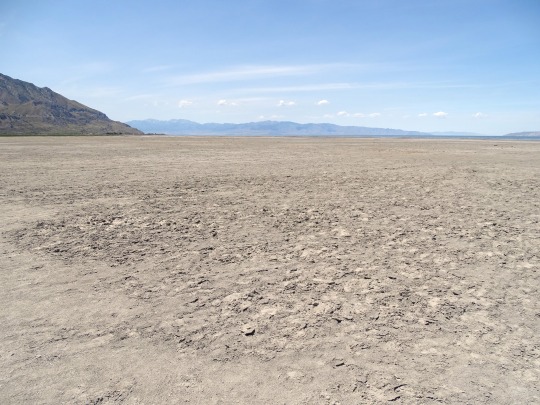


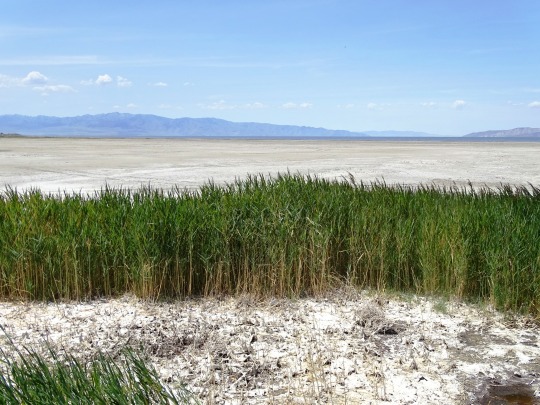

Great Salt Lake State Park, UT (No. 3)
The high salinity in parts of the lake makes them uninhabitable for all but a few species, including brine shrimp, brine flies, and several forms of algae. The brine flies have an estimated population of over one hundred billion and serve as the main source of food for many of the birds which migrate to the lake. However, the fresh- and salt-water wetlands along the eastern and northern edges of the Great Salt Lake provide critical habitat for millions of migratory shorebirds and waterfowl in western North America. These marshes account for approximately 75% of the wetlands in Utah. Some of the birds that depend on these marshes include: Wilson's phalarope, red-necked phalarope, American avocet, black-necked stilt, marbled godwit, snowy plover, western sandpiper, long-billed dowitcher, tundra swan, American white pelican, white-faced ibis, California gull, eared grebe, peregrine falcon, bald eagle, plus large populations of various ducks and geese.
There are twenty-seven private duck clubs, seven state waterfowl management areas, and a large federal bird refuge on the Great Salt Lake's shores. Wetland/wildlife management areas include the Bear River Migratory Bird Refuge; Gillmor Sanctuary; Great Salt Lake Shorelands Preserve; Salt Creek, Public Shooting Grounds, Harold Crane, Locomotive Springs, Ogden Bay, Timpie Springs, and Farmington Bay Waterfowl Management Areas.
Several islands in the lake provide critical nesting areas for various birds. Access to Hat, Gunnison, and Cub islands is strictly limited by the State of Utah in an effort to protect nesting colonies of American white pelican (Pelecanus erythrorhynchos) The islands within the Great Salt Lake also provide habitat for lizard and mammalian wildlife and a variety of plant species. Some species may have been extirpated from the islands. For example, a number of explorers who visited the area in the mid-1800s (e.g. Emmanuel Domenech, Howard Stansbury, Jules Rémy) noted an abundance of yellow-flowered "onions" on several of the islands, which they identified as Calochortus luteus. This species today occurs only in California, however, at that time the name C. luteus was applied to plants that later were named C. nuttallii A yellow-flowered Calochortus was first named as a variety of C. nuttallii but was later separated into a new species C. aureus. This species occurs in Utah today, though apparently no longer on the islands of the Great Salt Lake.
Because of the Great Salt Lake's high salinity, it has few fish, but they do occur in Bear River Bay and Farmington Bay when spring runoff brings fresh water into the lake. A few aquatic animals live in the lake's main basin, including centimeter-long brine shrimp (Artemia franciscana). Their tiny, hard-walled eggs or cysts (diameter about 200 micrometers)are harvested in quantity during the fall and early winter. They are fed to prawns in Asia, sold as novelty "Sea-Monkeys," sold either live or dehydrated in pet stores as a fish food, and used in testing of toxins, drugs, and other chemicals.There are also two species of brine fly as well as protozoa, rotifers, bacteria and algae.
Salinity differences between the sections of the lake separated by the railroad causeway result in significantly different biota. A phytoplankton community dominated by green algae or cyanobacteria (blue-green algae) tint the water south of the causeway a greenish color. North of the causeway, the lake is dominated by Dunaliella salina, a species of algae which releases beta-carotene, and the bacteria-like haloarchaea, which together give the water an unusual reddish or purplish color, and the bacteria converts non-toxic mercury into toxic methyl mercury, which then flows into the Southern portion of the lake in a heavy brine layer through the causeway.
Although brine shrimp can be found in the arm of the lake north of the causeway, studies conducted by the Utah Division of Wildlife Resources indicate that these are likely transient. Populations of brine shrimp are mostly restricted to the lake's south arm.
In the two bays that receive most of the lake's fresh water inflows, Bear River Bay and Farmington Bay, the diversity of organisms is much higher. Salinities in these bays can approach that of fresh water when the spring snow melt occurs, and this allows a variety of bacteria, algae and invertebrates to proliferate in the nutrient-rich water. The abundance of invertebrates such as gnat larvae (chironomids) and back swimmers (Trichocorixa) are fed upon extensively by the huge shorebird and waterfowl populations that utilize the lake. Fish in these bays are fed upon by diving terns and pelicans.
Source: Wikipedia
#Great Salt Lake State Park#Great Salt Lake State#travel#vacation#USA#Western USA#Utah#summer 2019#road trip#Lincoln Highway#salt crust#water#landmark#tourist attraction#landscape#countryside#mountains#Kennecott Garfield Smelter Stack#Rio Tinto Kennecott Smelter#engineering#chimney#architecture#Antelope Island#grass#stone#sand#original photography
1 note
·
View note
Photo

Sunset Stack -
The sun sets on the 1,215 feet (370 m) high Kennecott Garfield Smelter Stack and the adjacent Oquirrh Mountains near Magna, Utah.
1 note
·
View note
Photo

Repost from @seth.horowitz.3 GSL #47 Reverse Randy's...Fun new Route variation. Perfect water temp, perfect glass...could do without the brine flies at the ramp...🏊🏊🏊♥️😎 Fun facts about the Garfield Smelter Stack: Kennecott Utah Copper LLC’s Garfield Smelter Stack is a 1,215 feet (370 m) high smokestack west of Magna, Utah, alongside Interstate 80 near the Great Salt Lake. It was built to disperse exhaust gases from the Kennecott Utah Copper smelter at Garfield, Utah. The Garfield Smelter Stack is the tallest free-standing structure west of the Mississippi River, the fourth tallest smokestack in the world and the forty-third tallest free-standing structure on earth. It is the only operating smelter chimney left in Utah. In 1974 the Garfield Smelter Stack was completed, The extra height was needed to meet the requirements of the Clean Air Act of 1970, to disperse waste gases according to new standards. The off-gases from the flash smelting furnace contain 35-40% sulfur dioxide. They are cooled and cleaned in a waste-heat boiler, electrostatic precipitator and scrubbing system before being sent to the sulfuric acid plant. In 2006 the company produced and sold approximately 833,000 short tons (756,000 t) of sulfuric acid, made from the formerly released gas. The waste heat from the process to produce electrical power. Approximately 24 MW of electrical power is generated, representing 70% of the smelter’s electrical requirements. The stack is 177 feet (54 m) in diameter at the bottom with 12-foot (3.7 m) walls, and rises directly from the ground. At the top it is 40 feet (12 m) in diameter and 12 inches (0.30 m) thick. A large fiberglass duct passes up the stack and carries gases to the top. 26,317 cubic yards (20,121 m3) of concrete and 900 short tons (820 t) of steel were used in its construction. Construction commenced on August 26, 1974 and finished on November 17, an 84-day concrete pour. It cost $16.3 million at the time to build, the equivalent of $78.7 million in 2015 dollars. #openwater #openwaterswimmers #openwaterswim swimming #greatsaltlake #usms @uuclubswim @utahmastersswimming @pool.vs.cool @mastersswimming #newwaveswimbuoy @greatsaltlakestatepark — view on Instagram https://bit.ly/2Nn7KuW
0 notes
Photo


Oquirrh Mountains with the impressive Kennecott Garfield Smelter Stack
0 notes